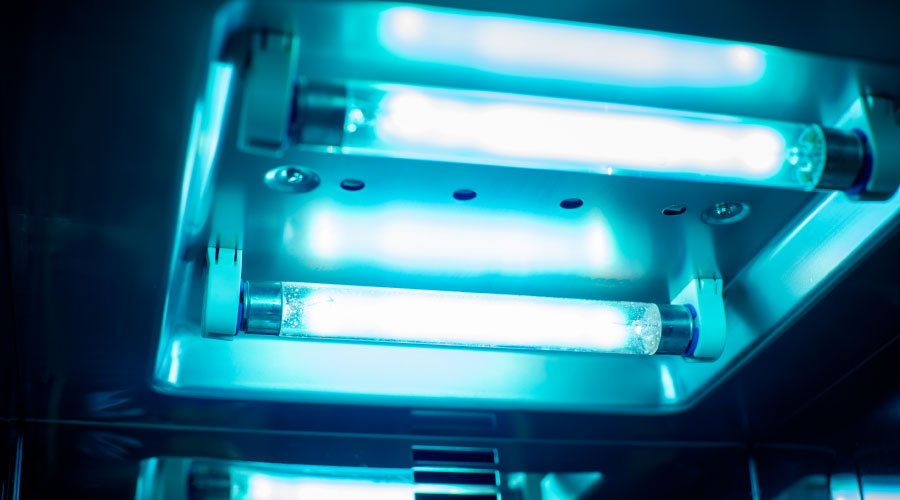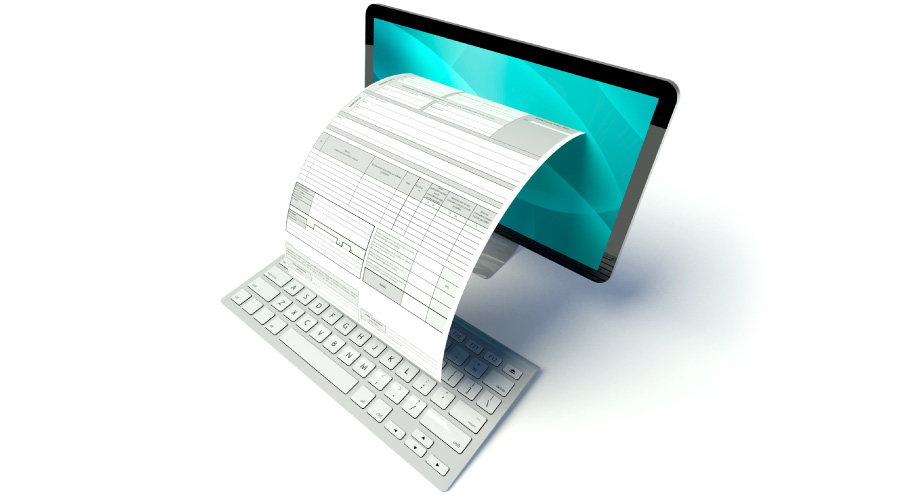
Dallas Fort Worth International Airport Installs UV Resources Equipment
The equipment was installed to aid in disinfecting the airport. July 21, 2023
Dallas Fort Worth International (DFW) Airport installed Ultraviolet-C (UV-C) disinfection equipment from UV Resources as part of its multilayered-infection control strategy designed to reduce passenger exposure to the SARS-CoV-2 virus.
The $7.5 million air disinfection initiative will improve the air quality in DFW's Terminals A, B, C, D and E, as well as its Rental Car Center. Recently germicidal UV-C disinfection fixtures were installed in 614 HVAC air handling units (AHU) that serve the airport's six passenger terminals and all public and nonpublic spaces, including TSA security checkpoints, ticket counters, gate areas and food courts.
To help put the scale of this project into perspective, a typical office building has an AHU on each floor. So, the DFW project was like outfitting the equivalent of 30, 20-story office buildings with UV-C disinfection fixtures.
The upgrade also required more than 3,600 UV-C lamps, or about ten times the number of lights used to illuminate Dallas' iconic Reunion Tower Ball. All this demand occurred at a time when pandemic supply chains quadrupled product and lamp delivery times, pushing the conventional two-to-four-week timeline to upwards of 20 weeks virtually overnight.
This undertaking was led by teams from Manhattan Construction, Texas AirSystems, DFW Electric and MEPC (consulting engineers). It is the latest in enhanced efforts by the airport in response to the COVID-19 pandemic.
The ultraviolet light technology aligns with innovative projects like the touchless fixtures in Smart Restrooms and targeted sanitization by cleaning Strike Teams throughout all five terminals.
Proven to disinfect
Since the 1930s, scientists have known that germicidal energy in the Sun's C-band wavelength quickly and completely deactivates bacteria1 and germs in the air and on surfaces.
This near-century-long track record of infection-control efficacy figured prominently into the airport's selection of UV-C technology, according to Rusty Vaughn, Vice President of Business Development and Special Projects at Texas AirSystems, which provided the UV Resources germicidal equipment.
"The peer-reviewed science coupled with the fact that UV disinfection is endorsed by the U.S. Centers for Disease Control and Prevention and ASHRAE helped substantiate the plan," says Vaughn.
Germicidal UV-C air disinfection systems are installed in a building's AHUs to disinfect moving airstreams before the treated air reaches occupants. Through a process known as photodimerization, ultraviolet energy damages a cell's nucleic acids and disrupts its genetic code, preventing microorganisms from infecting and reproducing.
Vaughn recommended the RLM Xtreme fixtureless UV-C lamp system from UV Resources for its high-output performance and installation versatility.
Designed for high-volume HVAC environments, the versatile RLM Xtreme can be installed in almost any position to generate 360-degree high output UV-C irradiation to inactivate bacteria, viruses, molds, and other pathogens–including antibiotic-resistant superbugs.
The uniform 360-degree distribution provides the best air treatment effectiveness and is consistent with ASHRAE Handbook guidance.
Because the UV-C disinfection fixtures are installed inside all the airport's large air handling units, virtually all public and occupied non-public spaces will circulate air treated by the UV-C systems. As air is recirculated, concentrations of infectious pathogens can be further reduced by each subsequent pass or cycle through the HVAC system, known as “multiple dosing”.
Unlike some other technologies, UV-C's electromagnetic energy does not "add" chemicals, VOCs or dangerous byproducts to the environment in or to perform deactivation of target pathogens.
After seeing the potential benefits of the newly installed germicidal disinfection system, facilities staff agrees that this technology has become an important component of the ever-increasing infection mitigation controls for the tenth busiest airport in the world.
Next
Read next on FacilitiesNet












